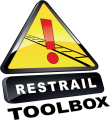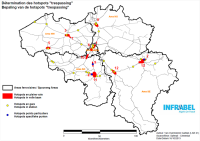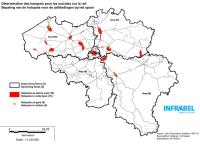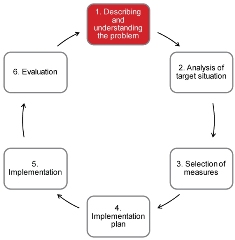 The problem can be a suicide hotspot, or a trespass site, or even a location where both type of incidents occur. One should first identify the type of problem by having a fine-grain analysis of the previous and current incidents: collect data, draw maps, analyse the data, identify the hotspots, etc.
The problem can be a suicide hotspot, or a trespass site, or even a location where both type of incidents occur. One should first identify the type of problem by having a fine-grain analysis of the previous and current incidents: collect data, draw maps, analyse the data, identify the hotspots, etc.
The decision maker should be able to select as many (or as few) of the problem-categories (e.g., suicides / trespass / both) that they want to, to help them to make their decision. For example, some users may want to determine which preventative options are based on location alone (e.g. stations). Others may have accurate data on a problem at a particular location, at a specific time of day, which largely involves a particular target group (e.g. at crossings, at night time, involving teenagers). Others may arrive at the conclusion that they need a suitable measure which is effective in critical locations, during different time periods, or for different age groups. For particular problems combining different families of measures might be needed.
| Actions | Questions to be answered | Issues to be considered |
|---|---|---|
| Identification of the problem | What is the nature of the problem? | -* suicides -* attempted suicides -* trespassing accidents -* trespassing behaviour |
| Which are the motives of trespassing? | -* trespassing with suicide intent -* shortcut, time saving -* graffiti / vandalism -* theft -* leisure, walking around / loitering | |
| In which part(s) of the railway system does the problem occur? | -* station (which platform, which part of the platform, etc.) -* marshalling yard -* railway line (open line) -* level crossing -* bridge -* tunnel -* some other location | |
| Where is the problem location? | -* preliminary identification of the location -* location marked in a map | |
| What are the characteristics of the surrounding areas? | -* facilities attracting pedestrians (e.g., locations and building, maintenance structures open for trespassing) -* schools -* mental hospitals -* outdoor routes -* stadiums -* shopping centres | |
| What do the accident statistics tell about the problem in the area? | -* available statistics of suicides and suicide attempts -* available statistics of fatal and non-fatal trespassing accidents -* number of events preferably for several years -* do the statistics cover all targeted incidents or some are excluded (e.g. incidents with minor consequences)? | |
| Further definition of the problem | What is the frequency of trespassing? | -* e.g. per day / week / month |
| What are the specific features of targeted people (based on reports, statistics)? | -* gender (male/female) -* age (children/youngsters/adults) -* people with mental problems -* drunken people -* drug users -* homeless people looking for shelter -* tourists -* etc. | |
| What are the specific features of the occurred events? | -* time of day -* time of year -* exact location in the problem area | |
| Is it possible to identify any hot spots in the problem location? | -* exact locations in which most of the events have occurred | |
| What are the nearest safe (legal) crossing places? | -* under/overpass -* legal level crossing (with or without safety devices) -* pedestrian crossing (active / passive) -* where is it located (near, far, which distance?) | |
| Are there existing preventative measures in the problem location? | -* technical measures (e.g. video enforcement) -* physical measures (e.g. fences) -* social measures (e.g. security patrols) -* behavioural measures (e.g. posters, campaigns) | |
| Partners and stakeholders | What are the relevant partners and stakeholders to be involved? | -* railway infra manager -* railway undertaking -* local authorities -* public and private institutions -* rescue services -* police -* public health institutes -* media -* voluntary organisations -* local interest groups (interested citizens) |
| Available resources | What are the constraints concerning the budget? | -* preliminary estimate of the budget -* contributions by involved organisation -* estimate of the implementation period (years) -* estimate of contributions by year |
| What are the costs and consequences of the problem? | -* financial (e.g. post incident intervention costs) -* social (e.g. time, delays) -* human (e.g. affected employees) |
If the location is a trespass hotspot, the intruders might have different motives for crossing the tracks (e.g., people taking short cuts, tourists going to the beach, vandalism and graffiti, metal theft, etc.). Accordingly, the decision maker should understand what drives the trespassing behaviour (see the figure below). In addition, frequent trespassing is an indication of a problem even if no accidents or suicides have occurred.
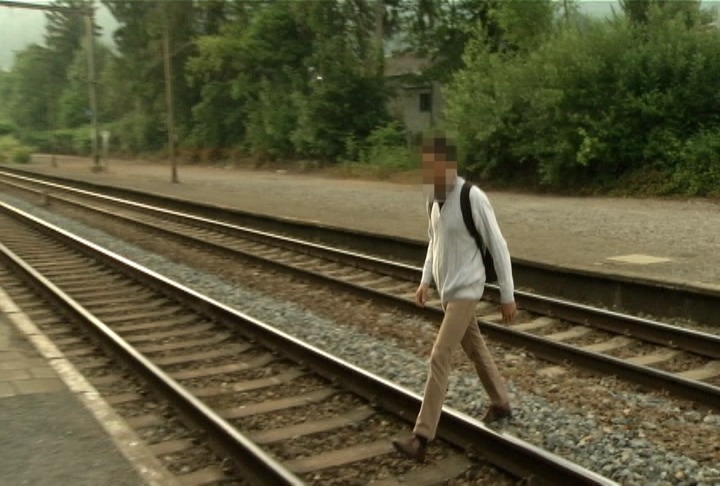
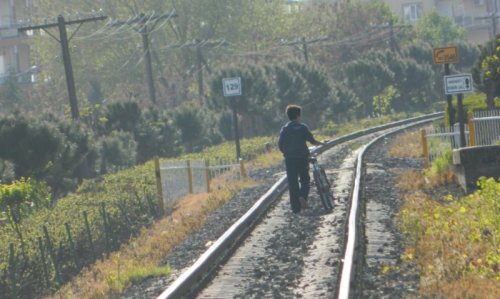
A paper checklist based on the table above can be used to support assessing the problem and recording the findings. A possible output of this step could result in maps similar to the ones drawn by INFRABEL after the analysis of the data recorded since 2008 (see the figure below). In Belgium, 43 trespassing hotspots and 24 suicide hotspots were identified. For details concerning the method used to identify these hotspots you may refer to the presentation "Trespassing. Actions in Belgium" by INFRABEL (08.02.2012) or contact Gaetan Van Overmeiren.
Examples of how trespass and suicide hotspots can be mapped to better understand the problem on the railway network (source: INFRABEL , 2013).
It may be difficult to make a distinction between locations where the long-term risk of suicide or trespassing accident is unusually high (at least for several years), and locations where accidents or suicide counts are temporarily high because of random variation (even though the long-term risk is unusually low). Regarding trespassing accidents, large volumes of trespassers are often a more reliable indicator of high trespassing accident risk than accident counts, because the proportion of random variation associated to small numbers (accidents) is higher than random variation associated to large numbers (trespasser counts). However, this rationale may not be relevant for the cases of suicides (where most attempts result in completed suicides).
Therefore, treating hotspots is not necessarily the only strategy and not always the best one. There may also be large numbers of incidents spread along the railways network without concentration on hotspots. Sometimes it may be more efficient use of resources to treat systematically certain types of locations or target certain type of behaviour as a whole (“mass action”) rather than trying to treat only those that are considered most dangerous by some judgement that may not always reflect correctly the real dangerousness of the site because of random variation in incident counts.
Taking into account the nature of the problem (suicide hotspots, trespasser groups, motives and location features), the decision maker should envisage the possible partners and stakeholders impacted by the problem or available to be involved as partners: public and private institutions, public health institutes, police, media, NGOs, etc. Each partner could eventually play a complementary role in addressing the issue.
A question regarding the costs and consequences of the problem should also be considered at the end of this step to support the decision making process regarding the amount to invest. Although cost benefit analysis is complicated to perform, some orientative cost categories could be provided to better understand the proportions of the problem: number of lost lives, magnitude of injuries, time, delays, damages, affected employees, etc.
